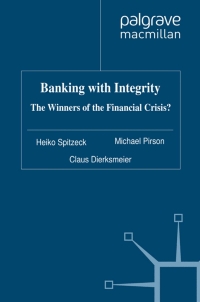
3. Expected Utility and Risk Aversion Consider an investor with von Neumann-Morgenstern expected utility function cy U(x, y, 7) = Au(W. + x) + (1 )u(Wo+y), defined over lotteries that offer payoff x with probability and payoff y with probability 1-7, where We measures the investors wealth before accepting the lottery. As we discussed in class, concavity of the Bernoulli utility function u captures the investor's aversion to risk. To verify this with an example, suppose that the Bernoulli utility function takes the specific form u(c) 1-7 so that u'(c) = 6-7 and u"(c) = -70-7-1 This last expression for u" (c) shows that the investor will be risk averse if the preference parametery is positive and, will become in some sense, "more risk averse" the larger is y. Suppose that Wo = 10, so that the investor starts out with $10, and consider the following three lotteries: 1. Lottery one has (x, y, 7) = (5,0,1/2), so that the investor wins $5 with probability 1/2 and gets nothing with probability 1/2. 2. Lottery two has (x, y, 7) (2.5,0,1), so that the investor gets $2.50 with probability one, that is, for sure. 3. Lottery three has (,y, T) = (2,0,1), so that the investor gets $2 with probability one, that is, for sure. Using these numbers, compute and compare the values of (W. + + x)? U(X,Y, 7) = m(W. + x) + (1 )u(W. + y) = A + (1-7) (W. + y)- 1-7 1-7 for all three lotteries when the investor has 7 = 1/2. Then re-do the exercise with y = 2 and y = 3. Looking across the results for all values of y, does the investor ever prefer the risky bet of $5 versus 0 to the safe option that offers the average of $2.50 for sure? Why or why not? Then compare the risky bet of $5 versus ( to the safe option that offers only $2 for sure. For which value(s) of y does the investor prefer the risky bet to the safe choice of $2 for sure? For which value(s) of does the investor prefer the safe choice of $2 to the risky bet? For which value(s) of 7 is the investor indifferent between the risky bet and $2 for sure? 3. Expected Utility and Risk Aversion Consider an investor with von Neumann-Morgenstern expected utility function cy U(x, y, 7) = Au(W. + x) + (1 )u(Wo+y), defined over lotteries that offer payoff x with probability and payoff y with probability 1-7, where We measures the investors wealth before accepting the lottery. As we discussed in class, concavity of the Bernoulli utility function u captures the investor's aversion to risk. To verify this with an example, suppose that the Bernoulli utility function takes the specific form u(c) 1-7 so that u'(c) = 6-7 and u"(c) = -70-7-1 This last expression for u" (c) shows that the investor will be risk averse if the preference parametery is positive and, will become in some sense, "more risk averse" the larger is y. Suppose that Wo = 10, so that the investor starts out with $10, and consider the following three lotteries: 1. Lottery one has (x, y, 7) = (5,0,1/2), so that the investor wins $5 with probability 1/2 and gets nothing with probability 1/2. 2. Lottery two has (x, y, 7) (2.5,0,1), so that the investor gets $2.50 with probability one, that is, for sure. 3. Lottery three has (,y, T) = (2,0,1), so that the investor gets $2 with probability one, that is, for sure. Using these numbers, compute and compare the values of (W. + + x)? U(X,Y, 7) = m(W. + x) + (1 )u(W. + y) = A + (1-7) (W. + y)- 1-7 1-7 for all three lotteries when the investor has 7 = 1/2. Then re-do the exercise with y = 2 and y = 3. Looking across the results for all values of y, does the investor ever prefer the risky bet of $5 versus 0 to the safe option that offers the average of $2.50 for sure? Why or why not? Then compare the risky bet of $5 versus ( to the safe option that offers only $2 for sure. For which value(s) of y does the investor prefer the risky bet to the safe choice of $2 for sure? For which value(s) of does the investor prefer the safe choice of $2 to the risky bet? For which value(s) of 7 is the investor indifferent between the risky bet and $2 for sure







